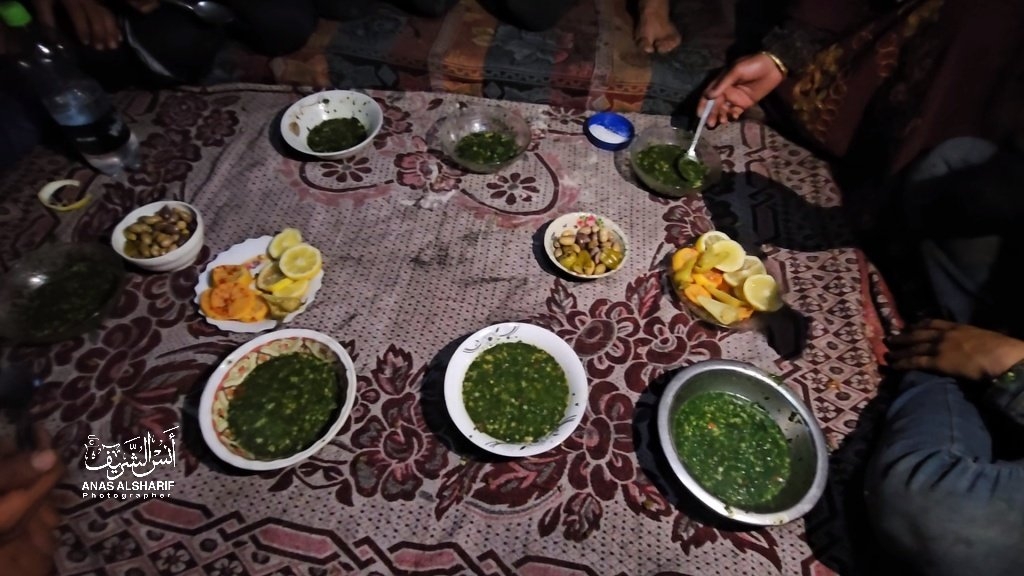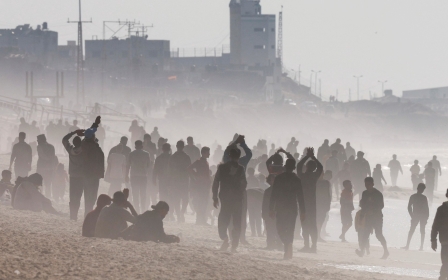War on Gaza: Palestinians are being forced to eat grass - here’s what it does to your body

For months now, aid organisations have been warning about the humanitarian catastrophe unfolding in Gaza.
The lack of aid coupled with Israel's siege on Gaza and relentless bombardment, which has been ongoing for over five months, has forced many Palestinians to resort to eating grass and weeds.
The United Nations on Monday said that famine is expected in northern Gaza between March and May.
"Famine is projected to occur anytime between now and May 2024 in the northern governorates," the UN Food and Agriculture Organisation said, citing a new analysis by the Integrated Food Security Phase Classification (IPC) on Gaza.
According to the IPC report, the entire population of Gaza, estimated to be around 2.3 million, is enduring "acute" food insecurity, while half the population suffers from a greater level of food insecurity classified as "catastrophic".
New MEE newsletter: Jerusalem Dispatch
Sign up to get the latest insights and analysis on Israel-Palestine, alongside Turkey Unpacked and other MEE newsletters
This week, an image of a Palestinian family in Gaza sitting down to break their fast with ground-up grass in bowls for their meal circulated rapidly online.
The image has sparked many questions over whether it is safe to eat grass, and if it has any nutritional value.
'We lie to our children and tell them it’s mulukheya'
- parent, northern Gaza
One family in Gaza told Middle East Eye's correspondent on the ground that they have been forced to pick grass and cook it amid a lack of any food or humanitarian aid.
“We lie to our children and tell them it’s mulukheya,” they said, referring to a jute mallow soup typically eaten around the Middle East.
Al Jazeera journalist Anas al-Sharif confirmed the reports of families eating grass, saying that it is being mixed with lemon and that “there are even some families who don’t have this”.
Is grass safe to consume?
While grass is technically edible to humans and non-toxic, it is not the best for humans, particularly if consumed over long periods.
Grass is made up of water and lignin, a protein that is hard to break down by the human digestive system.
For animals such as cows, eating grass is not a problem as their stomachs can aid in digestion and access the starch and cellulose found in grass.
However, for humans, the high amount of cellulose content means that there is little nutritional value, especially when compared to other foods rich in nutrients, vitamins and minerals.
Eating grass can also be harmful to teeth. Grass contains a high percentage of silica, which can be abrasive and wear down teeth over time, and while animals have teeth that have adapted to eating it, humans do not.
If consumed over a long period, silica, the main material of many rocks, will wear away at the enamel, the protective covering of teeth.
Grass can also be dangerous for consumption due to the dirt and pesticides used on it, which can over time cause cancer and birth defects.
Since human bodies struggle to break down grass in the gut if a large quantity is consumed, it can cause vomiting or diarrhoea - or at the very least it will pass out undigested, meaning it will provide little nutrition to the body.
Video footage from Gaza circulating online showed young children picking grass from the streets.
One mother reported that her children are “weak” and “always have diarrhoea, their faces are yellow,” after being forced to drink polluted water and eat grass.
Sam Husseini, a Jordanian-Palestinian writer and political activist, said that Palestinians eating grass is reminiscent of the Irish famine.
Man-made crisis
Limited aid has been allowed into Gaza since the start of the war on 7 October. In January, only nine humanitarian missions to the northern governorates were facilitated, falling to six in February.
The majority of the people who are on the verge of famine are in the northern governorates, where humanitarian access is extremely limited.
'Twenty five to 30 children are admitted to the hospital on a daily basis, with half of them suffering from dehydration and malnutrition'
- Dr Hussam Abu Safiya, Kamal Adwan Hospital
"The civilian population is increasingly desperate. We have received reports of people eating animal food, including hay, straw and other feed fit for cattle, goats and sheep," Vincent Stehli, Action Against Hunger's director of operations, said in a statement.
"We've been working in Gaza for 20 years and I've never seen anything like it," warned Stehli.
"Eighty percent of the children have infectious diseases; 70 percent have diarrhoea. They don't have enough food. Health services can't function. It's a perfect mix for malnutrition to have devastating impacts. This is just the beginning."
Dr Hussam Abu Safiya, head of the paediatric department at Kamal Adwan Hospital in the north of Gaza, reported that: "Twenty-five to 30 children are admitted to the hospital on a daily basis, with half of them suffering from dehydration and malnutrition."
"One child, two months old, died today because of dehydration and malnutrition. Other children are on the same trajectory unless the situation is addressed soon," he said.
Middle East Eye delivers independent and unrivalled coverage and analysis of the Middle East, North Africa and beyond. To learn more about republishing this content and the associated fees, please fill out this form. More about MEE can be found here.





